Count Józef Brigido, the fourth governor of Galicia, was a difficult nut to crack. He was able to deal with unrest in the villages, dissatisfaction among the Polish nobility and aversion to the wave of German immigrants. But what was he supposed to do about the ... vampire hunting scourge?
On July 21, 1780, the count could not stand it. He knew that only the specter of divine punishment would speak to the simple, superstitious people, so he turned to the Bishop of Krakow, Kajetan Sołtyk. He informed that it was not uncommon for the bodies of the dead to be taken from the ground and pierced due to the suspicion that the dead had become bloodsuckers , or - as they are commonly called - vampires. The governor suggested to the bishop that through the clergy he strictly forbid such desecration of a corpse. At the same time, he expected to be informed of any incidents.
Galician fearless vampire slayers
Meanwhile, the bishop pretended there was no problem. At first, he delayed the reply to the governor's letter, and when he finally wrote back, he was constricted.
Notify c I would like, Your Excellency, that in my diocese there has never happened an accident of the exhumation of human bodies considered to be vampires or any suspected executions on these bodies.
There was this superstition once among the common people […]. However, in my diocese, by the efforts of the clergy, this has been completely eradicated by the convictions of the people - he wrote to the governor.
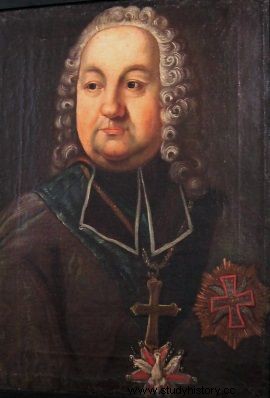
Bishop Kajetan Sołtyk. He made a bad face for a bad game and got around vampire hunting in his own way.
Despite these official assurances, however, he did not stop with a letter to the count. He issued a circular to priests from his diocese ordering the suppression of these practices, after all
Jurisdiction of the Bright Illuminated Prince of the Lord [i.e. bishop Sołtyk] it is almost certain that in this diocese there are no old superstitions about ghosts .
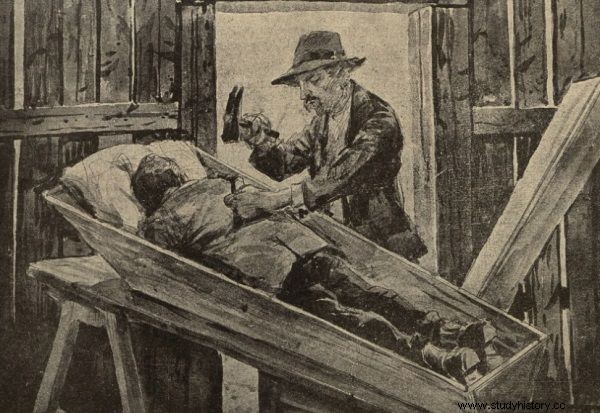
Nailing the deceased to the coffin just in case.
It is hard to believe that such a "macabre policy" in the event of returns from beyond the grave was alien to the bishop. In his own estates, in the town hall of Muszyna, in the majesty of Magdeburg Law, the death penalty was officially sentenced. There would be nothing strange about it, if not for the fact that it was to be followed by the so-called vampire burial. That is - guaranteeing protection against ghouls.
Childkiller with a stake ... just in case
The court heard the case of a young, unmarried child-murderer, Maruszko Teliszczakówna. The accused pleaded guilty to the alleged guilt and was sentenced under article 80 of the Magdeburg Law. He ordered a woman who would kill her child to be buried alive and impaled.
Teliszczakówna humbly accepted her punishment. No trace of an appeal against the judgment to subsequent instances has survived. We can therefore assume that the executioner buried her with a stake through her. As befits a potential ghost.
The "barbaric customs", which the governor of Galicia resented, did not disappear in the south of Poland as a result of the bishop's intervention. The anti-vampire practices reminded themselves in the early 1920s. The "Illustrated News" from 1922 gives an example of the following:
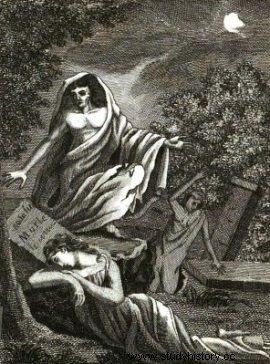
Because if you are naughty, the vampire will rise from the grave and eat you!
In some parts of our country, people still adhere to superstitions, which put us back hundreds of years back into the ancient Middle Ages when it was quite commonplace to believe in fears, ghosts, and repentant souls.
In the 1890s, a dozen or so farmers from one of the villages near Krakow sat in the criminal court in Krakow. They were heavily accused of desecrating the body. It all started with a suicide in their home village.
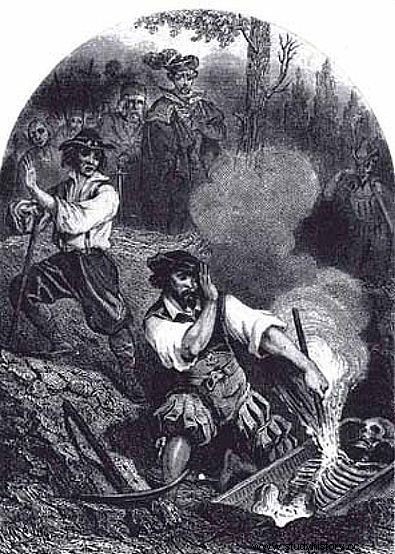
Old-fashioned ghoul disposal.
To protect the area from drought, the body of a suicide:
Pulled out of the barn with a hole dug under the sill, then on a sledge used to transport dung , transported to the field, where the grave was dug, thrown into its depths face down and with a rope tied with legs, knocked down with a coffin and its lid, finally buried .
Psychopath dad? Nail him down!
Thirty years later, the story of the host-murderer from Żywiecczyzna happened, also confirming the belief of the common people in superstition. A certain Józef Juras, residing in the Wieprz commune, gave all his property to his daughter. Soon after, he fell in love and married a young girl who was hoping for a rich inheritance from her newly wed husband.
When she found out that from the thread property, she left Juras. The one, abandoned, turned to his daughter. The woman, instead of accepting him with open arms, threw him from the newly acquired farm. Józef Juras fell into a rage, grabbed a butcher's knife and began to stab his daughter.
Juras's mother hurried to save her granddaughter and grabbed her maddened son. At that time, the wounded Jurasówna escaped and tried to call for help. Meanwhile, a tragedy took place in the cottage. Juras killed his own mother, then ran away and hanged himself in the barn. It would be the most ordinary episode in the life of the Polish countryside, if not for what happened next.
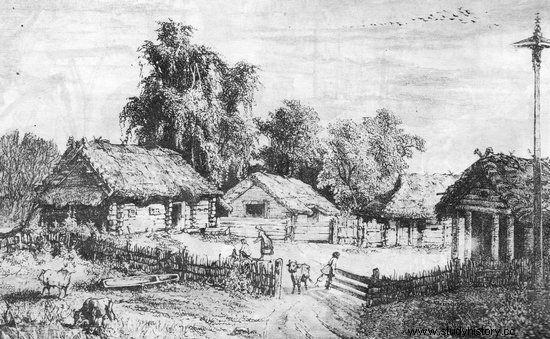
Maybe some vampire has settled in this country cottage as well?
As the hangman was being cut off, the locals rushed and began to tear the belt where Juras had hanged himself to shreds. Everyone wanted to take as much as possible for themselves. It was believed that they bring their owners good luck. When the deceased was about to be put in the coffin, superstition intervened.
The villagers persuaded a relative of the suicide to put him face down in the coffin and nailed him with a ten-inch nail to make sure. These practices were to make so that he could not move in the grave and "scare" the local people at night.
Because who would be sitting there in a grave after death?
About two hundred kilometers southeast of Krakow, on the banks of the Osława River, researchers found surprising information. According to one of the folk tales, back in 1936, in the village of Dołżyca, the specter that rose from the dead was supposed to attack cattle and people. Among the Lemko people living in the village of Mokre in Podkarpacie, there are also stories about people returning from behind the grave.
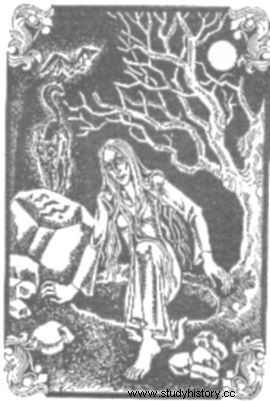
At midnight at night, the lid of the coffin creaked ...
Also in Radoszyce, located a bit to the south, a girl died shortly before the First World War. Two large "specialists" were brought to the village to deal with the specter. At midnight in the cemetery, after digging the coffin, it turned out that it was empty and the girl was just prowling somewhere. They noticed her, grabbed her and shortened it for her head, which they then put between her legs.
The procedure turned out to be so successful that the ghost was never seen again. At least that's what the legend says.
